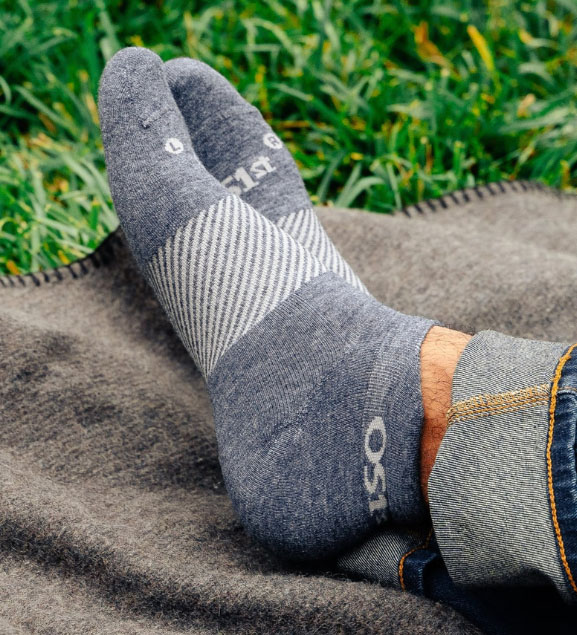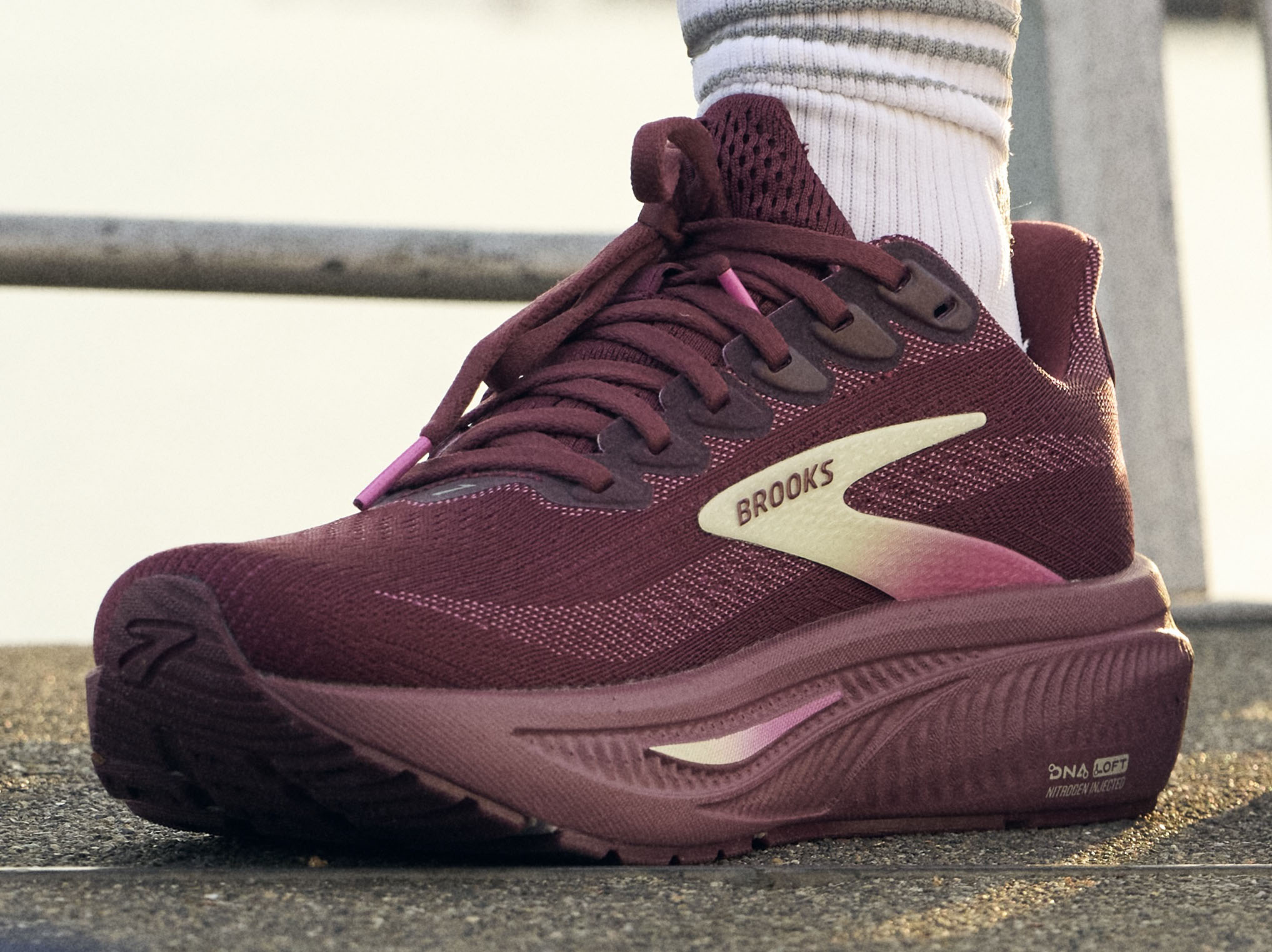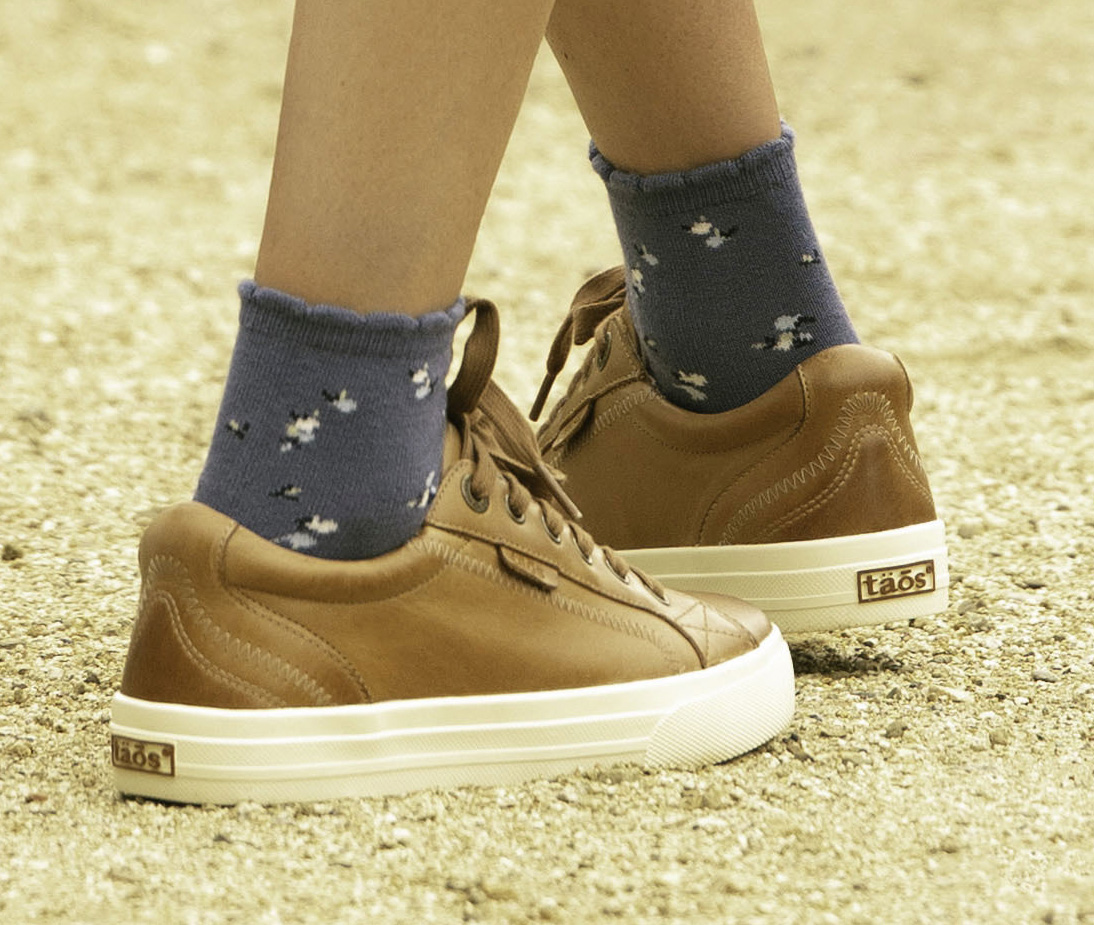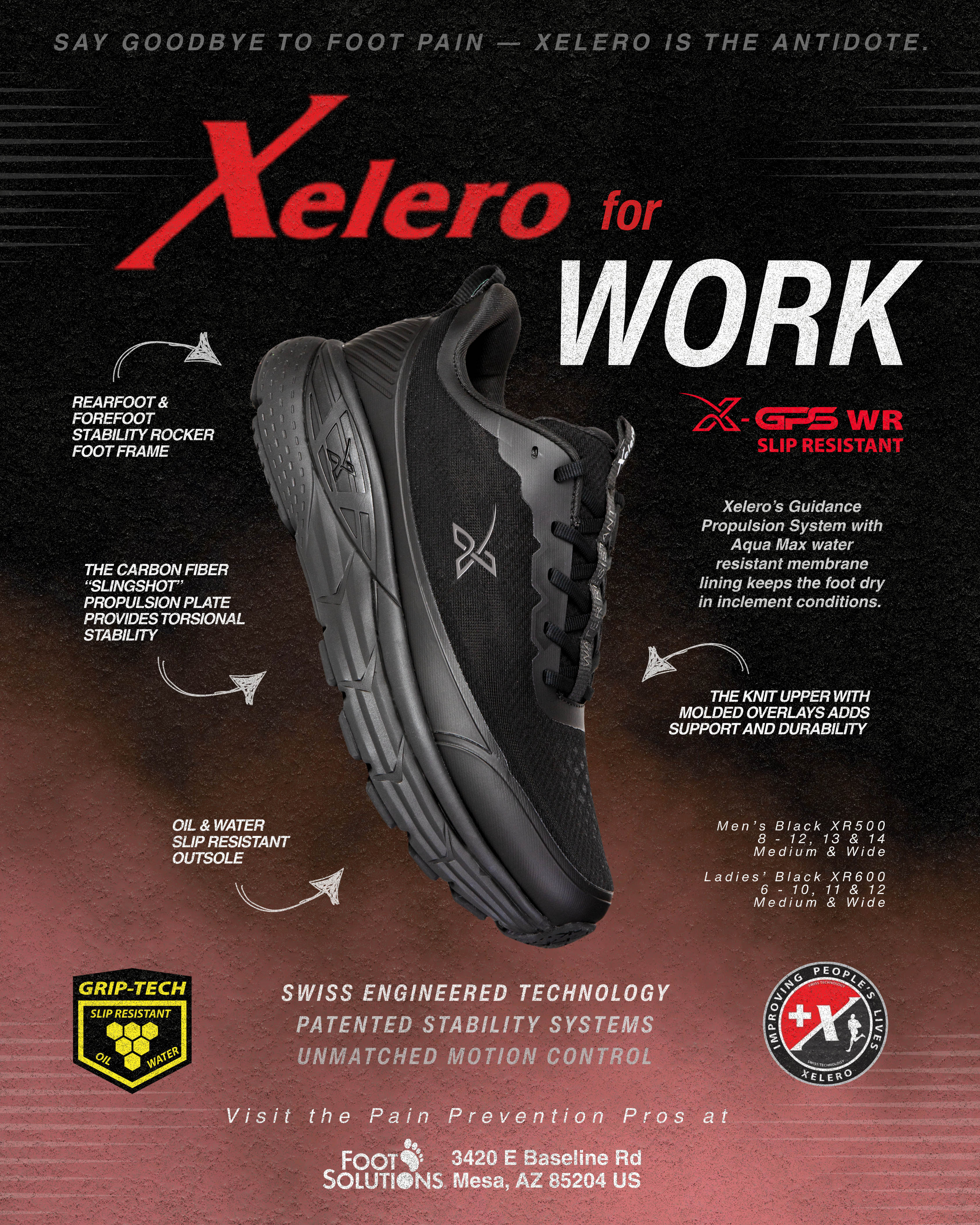
“Core to our strategy.” “The backbone of our business.” “Part of our DNA.” “The foundation of our brand.” Those are descriptions from execs about the importance of the independent retail channel to their brands.
But even as vital and mutually beneficial as partnerships between brands and independent retailers can be, we know that in 2025 these relationships are also as challenging as ever to maintain. As some relationships have fizzled, others have strengthened.
The above phrases are descriptions from execs about the importance of the independent retail channel to their brands. But even as vital and mutually beneficial as partnerships between brands and independent retailers can be, we know that in 2025 these relationships are also as challenging as ever to maintain. As some relationships have fizzled, others have strengthened.
All successful relationships require some give and take. When it comes to business, that’s true more than ever in 2025. In the case of brand and retail partnerships, this means (among other things) having honest dialogue about key issues such as the Direct-To-Consumer business, rising shipping costs, tariff impacts, product availability, pricing, and more.
We spoke with 17 different brands who are committed to success at independent retail. All these brands have been highlighted to us by retailers as strong partners. Here, the brands share their thoughts on the role independent retail plays in their business strategies, how they evaluate the success of partnerships, and how they handle the challenges facing brands and retailers alike.

OS1st
Josh Higgins, President
What role does the independent retail channel play in the brand’s overall strategy? Beyond sales, how do you evaluate the success of your relationships with independent retailers?
“The independent retail channel is the foundation of OS1st. Our entire business is built around serving specialty retailers because they create the connection between our products and the people who need them most. We back that commitment with dedicated assortments, in-store merchandising programs, staff education, and marketing support designed to strengthen their business. Every decision we make from product development to pricing starts with the goal of helping independent retailers thrive.
Sales are one measure, but true success comes from the strength of the partnership. When a retailer shows us trust, collaborates with us on events, or continues working with us year after year, it signals something bigger than transactions. Our ten years of growth alongside the industry shows they believe in our mission. That kind of long-term investment means we’re helping them strengthen their business and, in turn, supporting active and healthy communities. Longevity and collaboration are proof that our partnerships are creating value where it matters – inside the communities retailers serve.”
In 2025, how are you navigating the biggest challenges to maintaining a good brand/retail relationship?
“Our approach in 2025 is the same as every year—put independent retailers first. That commitment guides every decision we make. This year, that means holding wholesale prices steady despite rising tariffs and communicating changes with long-term timelines, so retailers can plan with confidence. It also means continuing to give them ownership of key sales moments like Labor Day and Black Friday / Cyber Monday, rather than competing with them online. We’ve invested in faster, more reliable fulfillment to ensure products are available when needed, and we maintain complete transparency, so our partners always know what to expect. Supporting independent retail isn’t a reaction to challenges, it’s the foundation of how OS1st does business.”

Simco Imported Shoes (Arcopedico & Biza)
Sydney Simas, VP
What role does the independent retail channel play in the brand’s overall strategy? Beyond sales, how do you evaluate the success of your relationships with independent retailers?
“Independent Retailers are truly the backbone of our business. My grandparents founded Simco Imported Shoes in 1983 as the United States distributor of Arcopedico. Since its inception, Simco’s mission statement has always been to be the best vendor partner we can be. Now in our third generation, Simco remains dedicated to the relationships built by my grandfather and father. Many of our customers are multi-generational as well, and we always want to ensure we are supporting the independents to the best of our ability, and offering unmatched customer service.”
In 2025, how are you navigating the biggest challenges to maintaining a good brand/retail relationship?
“Almost all brands have seen the need to grow their ecommerce business in response to lost revenue due to Covid. The fact is, Covid changed the way consumers shop, and we have to survive. That being said, Simco has made a commitment to operating our D2C site as ethically as possible. I do not discount online, I don’t put offers in shoe boxes for a discount, and I don’t try to steal customers from my independent retailers. If anything, the marketing budget in place I have on social media will hopefully drive customers to the brick & mortar retail stores. For us all to be successful, we have to invest in brand recognition.
Shipping costs are of course outrageous, and they are for Simco as well. I always encourage accounts to join the National Shoe Retailers Association, NSRA, and take advantage of their shipping program. This can save them thousands of dollars, and the cost of membership is minimal. It’s a win-win for all involved.
Inventory management has become challenging. Just as retailers don’t want to end up with product at the end of the season, neither do we. For our seasonal items, it becomes a little tricky to effectively manage stock positions. I am running on leaner inventory, which makes it difficult to project for At-Once orders. I always encourage customers to pre-book for their needs for the season, including back-up orders. These orders are cancellable and adjustable, but it’s the only way I can guarantee stock for our customers.
Ever-changing tariffs have made price projections incredibly difficult for all brands. While things have settled down a little, we have to protect Simco while not price gauging our customers. I have had to say “pricing subject to change” on all Spring orders, and we’ll see what the final cost is at the time of delivery. Of course I do everything in my power to limit price increases, but as we know price increases are inevitable.”

Brooks
Dave Patterson, Senior Manager of Specialty Sales
What role does th independent retail channel play in the brand’s overall strategy? Beyond sales, how do you evaluate the success of your relationships with independent retailers?
“Early in the year at a retail conference, our CEO Dan Sheridan said, ‘Running is local,’ and that’s absolutely true. Over the last few years we’ve seen the runner, especially newer or younger runners, seek out in-person experiences happening in their local communities. Whether that’s where they shop, who they train with, or where they race, they’re looking to be part of a community. There’s no better expression of that than what each of our retail partners is doing locally in their own communities, and Brooks’ strategies are built to support that. You see this in action when you look at how Brooks is investing in people, like expanding our sales and tech rep teams to deliver more in-person touches, as well as growing our retail marketing team to invest more resources in bespoke digital demand generation, regional or local races, and events. Being authentically engaged with runners at the local level is impossible without investing and supporting the local retailer!
When measuring success, numbers help. We look at sales, market share, and invoice growth, but those only capture a moment in time. More broadly, we look at things like survey data from Brooks retailers. Are we delivering great customer service? What’s the reputation of our reps? Are we top of mind with the sales associate, and do they view Brooks favorably and recommend us to runners? How many fun runs, races, and clinics are we showing up to?
And when we fall short, are our retailer partners inviting us into constructive conversations about how we can be more successful? I think that’s a key indicator of how engaged and investment your partners are in the relationship. While sales numbers are going to fluctuate, all these other indicators of a great partnership drive long-term growth for Brooks, and we know if we stay focused on keeping those partnership metrics thriving, our brand, our partners, and the runner will continue be successful.”
In 2025, how are you navigating the biggest challenges to maintaining a good brand/retail relationship?
“Brooks keeps the runner at the center of everything we do. That’s a constant in our strategic framework, regardless of the opportunities or challenges we’re seeing in the environment. Keeping the runner at the center gives Brooks a uniquely clear view. We know runners are (and always have been) looking for experiences, expertise, and community. That’s something our retail partners have always delivered. It’s critical to foster deeper partnerships to help elevate and amplify what our retail partners do every day because that’s at the core of what the runner is looking for. Specifically in 2025, Brooks has shown up more alongside our partners in these communities. Whether it’s races, training groups, fun runs, or special events in the store, Brooks has invested more resources than ever to make sure we’re both driving runners to and showing up alongside our retailer partners.
When it comes to the unprecedented operational challenges going on, we’re leaning into those partnerships by being open, honest, and transparent with our communication and decisions. We believe by staying in constant communication, we as partners with our retailers are going to be able to make the best decisions possible to help stay true to our shared mission of inspiring everyone to run and be active.”

Mephisto USA
Logan R. Bird, Vice President - Omni Channel Sales
What role does the independent retail channel play in the brand’s overall strategy? Beyond sales, how do you evaluate the success of your relationships with independent retailers?
“The independent retail channel is the foundation of our brand’s strategy. We’ve built our business in partnership with these retailers, and they play a crucial role in bringing our brand to life. Beyond driving sales, our relationships with independent retailers help us maintain a strong brand identity and connection with our customers.
To evaluate the success of these relationships, we look beyond sales metrics to factors like customer feedback, retailer engagement, and the overall health of our partnerships. We measure success by the strength of our collaborations, the level of trust and communication we have with our retailers, and the ways in which we’re able to support each other’s growth.
Our goal is always a ‘win-win’ relationship, to coin a term long used by our CEO Rusty Hall, where both our brand and our retail partners benefit and thrive. We prioritize building long-term relationships, providing support and resources to help our retailers succeed, and working together to create unique customer experiences that showcase our brand’s values and personality. By doing so, we can maintain the authenticity and personal touch that sets us apart in the market.”
In 2025, how are you navigating the biggest challenges to maintaining a good brand/retail relationship?
“One key area we’re focusing on is product availability and inventory management, where we’ve prioritized maintaining a healthy stock position in our U.S. warehouse to meet the shift towards more conservative buying patterns and buying from stock rather than futures. By doing so, we’re able to reduce lead times and ensure that our retail partners have access to the products they need to meet customer demand. This approach has helped us build trust and strengthen our relationships with our independent retailers.”

Aetrex
Matt Schwartz, Chief Revenue Officer
What role does the independent retail channel play in your brand’s overall strategy? Beyond sales, how do you evaluate the success of your relationships with independent retailers?
“The independent retail channel is core to our brand strategy. For over 20 years we’ve invested heavily in developing fitting technologies that help independents differentiate their in-store experience from shopping online. With a technology like Albert Pro, Aetrex and the retailer can measure success in many powerful ways. For instance, we work with partners to track metrics like total scans by sales associate, scan-to-footwear sales, scan-to-orthotics sales, scan-to-average basket size. Over and again, if their retail execution is strong, our technology drives huge lift in profitability for our partners.”
In 2025, how are you navigating the biggest challenges to maintaining a good brand/retail relationship?
“My brothers and I work hard to build strong relationships with our partners. We are committed to being forthright and honest, straightforwardly explaining why we believe our strategy is mutually beneficial while listening to alternative points of view and remaining flexible as to the best path forward.”

Feetures
John Gaither, CEO
What role does the independent retail channel play in the brand’soverall strategy? Beyond sales, how do you evaluate the success of your relationships with independent retailers?
“Independent retail has been part of our DNA since the very beginning. Specialty shops were the first to believe in Feetures, and those relationships built the foundation of our brand. They remain essential in introducing our products to consumers who value expertise and community. We measure success not only in sales, but in how well we serve and support their stores- from consistent product delivery to staff training to try-on programs that help convert new customers. When our partners tell us we’ve helped their business grow, that’s the true measure of success.”
In 2025, how are you navigating the biggest challenges to maintaining a good brand/retail relationship?
“We approach challenges with one guiding principle: treat partners the way we’d want to be treated. For us, that means keeping DTC complementary to retail, investing in operations to ensure reliable product availability, and maintaining transparency in communications about the most important issues affecting our business. 2025 has certainly posed challenges with an increased amount of uncertainty affecting supply chains. We have tried to be patient in our approach and communicate proactively so retailers know what to expect from us. We try to be thoughtful in all decisions that we make and consider how they will impact our retail partners, consumers, and our brand. That has helped us strike the right balance as an omnichannel business.”

SAS
Kelly Dumpson, Head of Sales - Wholesale
What role does the independent retail channel play in the brand’s overall strategy? Beyond sales, how do you evaluate the success of your relationships with independent retailers?
“The independent retail channel is central to the SAS business. The high level of service and personal experience our independent retail partners offer consumers perfectly meets the SAS footwear focus on quality, fit, versatility and long-term value. Our success happens together on the fitting stool; customers leave with the right shoes and come back to shop again and again.”
In 2025, how are you navigating the biggest challenges to maintaining a good brand/retail relationship?
“While 2025 has brought challenges it has also brought opportunities as consumers place a higher premium on value. Value in footwear today means versatile, well made, well-fitting shoes that support health and wellness and are available when the consumer wants them. SAS is dedicated to meeting consumer demand and supporting our retailers with top selling styles in multiple sizes and widths available to ship to their stores every day.”

revere
Liam Bourke, EVP/GM
What role does the independent retail channel play in the brand’s overall strategy? Beyond sales, how do you evaluate the success of your relationships with independent retailers?
“Independents are foundational to revere’s strategy. Our brand is built around fit, adjustability, and support, and specialty retailers are uniquely equipped to deliver that experience via their service, knowledge of both the product but also their local consumer. They are our most candid product lab and our best storytellers.
Beyond topline growth, we measure: Sell-through (where retail partners are happy to provide us with their reporting); Margin sustainability with competitive and meaningful retail price points; Service levels on the delivery new season styles (a new initiative of the company); Reorder velocity and depth on core styles; Associate training ; Return rates; and Local activation – events, clinics, and co-op that bring new customers into the channel.”
In 2025, how are you navigating the biggest challenges to maintaining a good brand/retail relationship?
“We have just gone through the launch of The Comfort Co site, where we will keep it simple with partner-first policies, clear communication, and operational follow-through.
DTC: Not breaching our own MAP policy is the cornerstone of our digital strategy. Additionally, we are implementing a platform on our site called Stock In Store, designed to push traffic to local partners first.
Product availability: Whilst there have been a couple of misses as we have integrated the revere brand over to The Comfort Co, we are working to ensure deeper size runs in year-round core items. We are also in the process of implementing a B2B to provide real-time inventory visibility and faster and more efficient replenishment.
Pricing/MAP: A clear annual cadence, advance notice on changes, and consistent enforcement across marketplaces. We provide above industry margins designed to protect retailer margin.
Service: Door-level account management, rapid issue resolution, and practical tools.”

Naot
Ayelet Lax Levy, President (U.S. Operations)
What role doe the independent retail channel play in the brand’s overall strategy? Beyond sales, how do you evaluate the success of your relationships with independent retailers?
“Independent retailers remain at the heart of our brand strategy. They are often the first point of discovery for new customers and bring a unique mix of expertise, community connection, and trust that can’t be replicated elsewhere. While sales are an important metric, we evaluate success by the strength of the partnership: mutual growth, consistent communication, repeat sell-through, and the level of support retailers feel they receive in areas such as training, marketing, and service. A thriving retail relationship means both sides win—not only in revenue but in long-term customer loyalty.”
In 2025, how are you navigating the biggest challenges to maintaining a good brand/retail relationship?
“In 2025, maintaining strong retail partnerships is both more complex and more valuable than ever. Our guiding principles are transparency and consistency, especially on issues that matter most to retailers:
Balancing DTC and Retail: We see direct-to-consumer not as competition, but as a complementary channel. Aligning pricing, messaging, and promotional cadence ensures that retailers are never undercut.
Managing Shipping Costs: Logistics efficiency, flexible order minimums, and consolidated shipments help independents manage inventory more effectively. In addition, we call on all back orders before shipping, so retailers have full visibility into what’s included and the associated costs. This approach makes sell-in and sell-out more efficient and profitable.
Ensuring Product Availability: Clear forecasting and open communication remain foundational, but we’ve also made major investments in our northern Israel factory. Expanding staff, development, and design capabilities allows us to focus on timely deliveries to the U.S. market and beyond. We’ve already begun shipping Spring 2026—the earliest in our history. At the same time, we are returning to our Euro-comfort roots, with arch and metatarsal support, adjustability, and craftsmanship once again at the forefront. And with our bigger team and expanded manufacturing, we’re proud to bring more of our collections back to Israel, while continuing a few select lines in Portugal to maintain a well-rounded assortment.
Protecting Pricing and Margins: We remain disciplined about MAP (minimum advertised pricing) and actively monitor and enforce it to ensure fairness across all channels. Beyond that, we made a strategic price reduction—cutting margins and costs on our side—to help retailers and consumers manage the reality of rising costs.”

Cadence
John Hinds, PT, Founder, Owner
What role does the independent retail channel play in the brand’s overall strategy? Beyond sales, how do you evaluate the success of your relationships with independent retailers?
“Independent retailers have been at the core of Cadence from the beginning. They were the first to believe in our product, and they remain the most authentic way to introduce Cadence to customers. For us, retail partners are more than just sales outlets—they are educators and trusted voices in their respective communities.
We evaluate the success of these relationships not only by sell-through, but also by the feedback we receive. When store staff tell us that customers are returning to buy a second pair, or when we hear that a Cadence insole helped someone stay active, that’s a measure of success. We also look at longevity—some of our accounts have been with us for more than a decade, which speaks volumes about mutual trust and value.
In 2025, how are you navigating the biggest challenges to maintaining a good brand/retail relationship?
“Retailers are more selective than ever, and relationships need to be built on transparency and support. A few specific ways we’re addressing this:
DTC vs. Retail Balance: While we do sell a few models DTC, we also have exclusive models that are not available to purchase online; we never undercut our retail partners; we maintain consistent pricing across all channels, and we always direct customers to their local retailers. Retailers give customers the chance to see, feel, and fit the product—that experience is irreplaceable.
Shipping Costs: We work to consolidate shipments, minimize freight where possible, and absorb some of the fluctuations so that our retail partners can maintain healthy margins.
Product Availability: We understand how disruptive backorders can be and do our best to maintain inventory. Even through challenges like tariffs and supply chain issues, we do our best to prioritize keeping core models in stock.
Pricing: We’ve been remarkably steady with pricing, holding the line for over 14 years despite rising costs(!) Any adjustments we’ve had to make are carefully considered, and we communicate them clearly and in advance.”

Dansko
Kitty Bolinger, President
What role does the independent retail channel play in the brand’s overall strategy? Beyond sales, how do you evaluate the success of your relationships with independent retailers?
“Independent retailers are the lifeline of our brand. Since the first independent retailer agreed to try the Dansko clog as a ‘test’ because our sales rep had a strong relationship with the store owner, to the expanded assortment available at the new Harry’s Shoes in NYC, we have been blessed with the support and friendships of our independents. We measure our success by the length of the relationship and the retailers’ willingness to partner with us on key initiatives.”
In 2025, how are you navigating the biggest challenges to maintaining a good brand/retail relationship?
“2025 has been a challenge for all of us. Dansko heard from many independent retailers that getting folks to come to their stores was more difficult than ever. We partnered with a handful of our independents and went to the customer — specifically at health care facilities in their area and connected the health care workers with the independent in a way that was joyful and gave the health care worker a deeper connection with the retailers. In these uncertain times we believe that Dansko needs to partner with the retailers in creative ways to drive more traffic to their stores. That is a hot button issue that is within our ability to affect.”

Taos
Mike Walker, VP of Marketing
What role does the independent retail channel play in the brand’s overall strategy? Beyond sales, how do you evaluate the success of your relationships with independent retailers?
“Independent and specialty retailers have been at the heart of Taos since the beginning. For over 20 years, these passionate partners have helped us bring comfort, style, and support to communities across the country, and our brand wouldn’t be what it is today without them.
Celebrating our 20th anniversary with many of these retailers in Atlanta this past August was a powerful reminder of the relationships we’ve built and the meaningful journey we’ve shared.”
In 2025, how ar you navigating the biggest challenges to maintaining a good brand/retail relationship?
“At Taos, we’re committed to investing deeply in marketing that does more than promote a product - it builds brand awareness, drives consumer demand, and ultimately supports traffic into our retail partners’ stores. Whether through social campaigns, targeted digital efforts, or word-of-mouth powered by incredible customer experiences, our goal is to grow with our retailers, not around them.
Partnership and support are more than values at Taos - they’re how we walk forward together.”

Thorogood
Beth Brownleey, Key Account Manager, Thorogood.
What role does the independent retail channel play in the brand’ overall strategy? Beyond sales, howdo you evaluate the success of your relationships with independent retailers?
“The independent retailer plays a pivotal role in our success by fostering brand loyalty, encouraging experimentation, and providing unwavering support.
These retailers possess essential skills such as passion, hands-on approach, service orientation, inventory management, and people management. Thorogood works diligently to maintain strong relationships with our independents through our field support staff and customer service team.”
In 2025, how are you navigating the biggest challenges to maintaining agood brand/retail relationship?
“Our primary focus is not to compete with retailers by selling directly to consumers. Instead, we maintain a constant inventory of our boots to fulfill incoming orders promptly. We are committed to building customer loyalty by consistently delivering exceptional service.”

Xelero
Mike Arce, National Sales Manager
What role does the independent retail channel play in the brand’s overall strategy? Beyond sales, how do you evaluate the success of your relationships with independent retailers?
“Our brand is built for independent retailers. We are not a big box, self-service shoe brand. Our brand is sold by retailers that care about the overall health and well-being of the customer. Not being a ‘Marketing’ brand, we solely count on our retailers that are truly sit-and-fit stores that listen and apply knowledge to accommodate the overall well-being to the customers. In short, the customer/patient visits the retailer with the check engine light on, per se and the sales associates are trained and armed with the knowledge to help that customer/patient find relief. This partnership only works when the retailer truly embraces finding solutions for many common foot and gait ailments. It goes without saying that the brand has to provide training for the retailer to be successful. Brands can’t just sell in product. Brands have to teach, educate, motivate, and be part of the culture on the sales floor.”
In 2025, how are you navigating thebiggest challenges to maintaininga good brand/retail relationship?
“At Xelero, we know how important the fitting process is. Xelero sizing by style is not one size fits all. In other words, the magic happens on the sales floor. Only on the sales floor can open-ended questions be answered and resolved. Our website was not created to compete with our retailers, but was created to educate and lead the customer to a store to find a location where they can be fitted by a retailer. We just added a B2B site for our retailers. This has been an incredible selling tool for our retailers.”

Finn Comfort USA
Justin Orrell-Jones, CEO/President
What role does the independent retail channel play in the brand’s overall strategy? Beyond sales, how do you evaluate the success of your relationships with independent retailers?
“From our perspective the independent retail channel is the primary means by which we reach the FinnComfort consumer. Our product development, our distribution strategy, and our extensive stock program are all about what is best for our independent retailers. We believe FinnComfort continues to provide an increasingly unique opportunity for the independent retailer. That is, a brand with a very high-quality product, with very limited distribution, that ultimately cultivates very loyal consumers.”
“We evaluate the success of our relationships by listening! We are fortunate that most of our retailers are open to communicate about our business together. This includes things we do well and things we could improve. Of course, events like NSRA meetings or shows like Atlanta are invaluable opportunities to have these conversations.”
In 2025, how are you navigating the biggest challenges to maintaining agood brand/retail relationship?
“This year we have been going through significant confusion surrounding high tariffs, increasingly higher costs of freight, and rising production costs in Germany. This has all added up to a shocking impact on margins and an unquestionably complex and challenging period in our industry. As a result, we have tried to navigate through this in such a way that it minimizes the effect on our customers. From the onset and at least through 2025 we have chosen to absorb those extra costs and not pass them on to the retailer. Fortunately, despite those additional costs we have managed to remain in a strong inventory position maintaining our reputation as a stock-house!”

Alegria
Luke Chen, CEO
What role does the independent retail channel play in the brand’s overall strategy? Beyond sales, how do you evaluate the success of your relationships with independent retailers?
“Independent retailers are best equipped to help brands tell their stories when the resources are provided. For Alegria, we measure success on how well we can properly engage with the retailer and their staff about our products through training as well as marketing collaborations.”

Powerstep & Currex (Foundation Wellness)
Nicholas Adams, Chief Sales Officer
What role does the independent retail channel play in the brand’s overall strategy? Beyond sales, how do you evaluate the success of your relationships with independent retailers?
“The independent retail channel is the most strategic channel for Foundation Wellness brands, PowerStep and Currex. We do not sell into mass, and we believe the best introduction to our brands is through the expertise and personal service customers receive on the retail floor.
Success in this channel goes beyond sales. For us, it’s about building partnerships where we actively exchange ideas on how to improve the shopper’s experience. We’ve invested in an outside sales team dedicated to training and educating retail staff, ensuring they feel confident in recommending our products and customers leave with the right solution.
Our strongest relationships—and best outcomes—come from retailers who embrace this collaboration. When we’re working side by side with their teams in-store, it not only elevates the customer experience, it drives growth for both the retailer and our brands.”
In 2025, how are you navigating the biggest challenges to maintaining a good brand/retail relationship?
“We’ve made supply chain reliability a core part of our strategy to strengthen retail partnerships. By owning our own manufacturing plants and distribution center, we’re able to control quality, improve product availability, and respond quickly to customer orders.
This structure reduces backorders and shipping delays, ensuring that retailers can turn inventory faster and lower their carrying costs. It also allows us to maintain stable pricing and protect retailer margins, even in a market where DTC growth and rising costs are top of mind. Ultimately, our goal is to make it easier for our retail partners to do business with us while delivering a consistent, reliable experience for their customers.”


.svg)